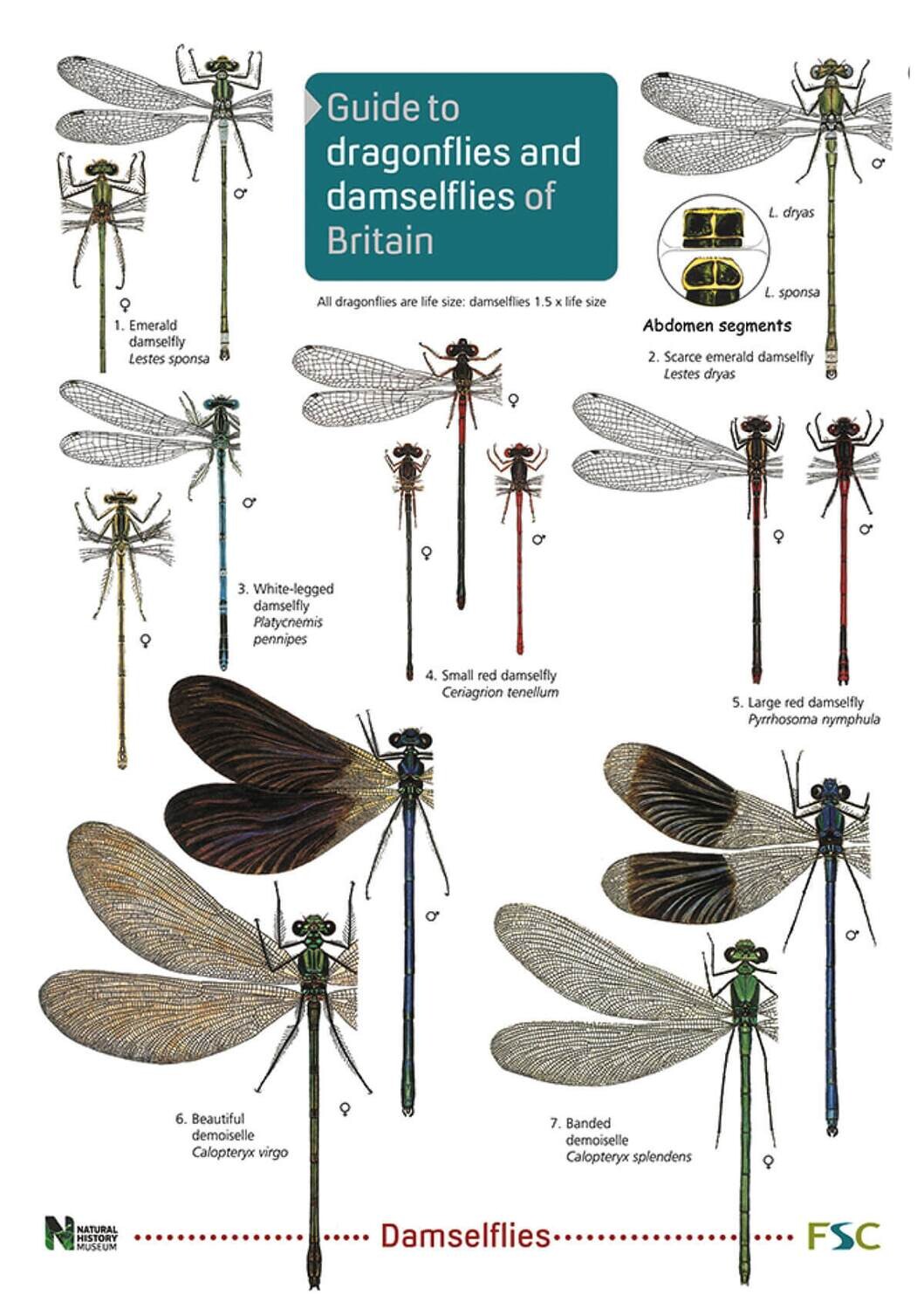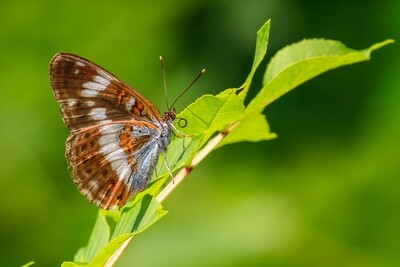
Guide to Dragonflies - fold out chart
The FSC Dragonflies guide features adults of 16 damselfly species and 28 dragonfly species. The guides are stunningly illustrated, packed with facts and splash-proof making them perfect for heading outdoors.
Designed for speedy dragonfly identification in the field, it includes beautiful colour paintings, shown at life-size, by Richard Askew. We have included different forms for males and females throughout. Similar looking species are close to each other for easy comparison.
Dragonflies and damselflies form two suborders within the Odonata. Dragonflies belong to suborder Anisoptera. Damselflies belong to suborder Zygoptera. There are about 5500 Odonata species in the world today. But dragonflies were among the first flying insects to appear on earth. Indeed, fossils of dragonfly-like insects occur in Carboniferous rocks that are 350 million years old. All Odonata have two pairs of densely veined wings and long segmented bodies, often in bright colours. The adults are day-flying, among the bank-side reeds of rivers, streams, ponds or lakes. This is because the larval stage is aquatic. Larvae and adults are carnivorous.
Adult dragonflies are large insects. The biggest British species has a wing span of about 10 cm, and a body length of about 8 cm. When they hold their wings open at rest, you will notice their huge eyes which occupy most of the globular head. In contrast damselflies are much smaller and have a relatively weak fluttering flight. They settle more frequently than dragonflies and usually hold their wings shut over the top of the body. The eyes of damselflies are also smaller and have a different position on the head to dragonflies.
The Dragonflies guide was produced in partnership with the Natural History Museum.





